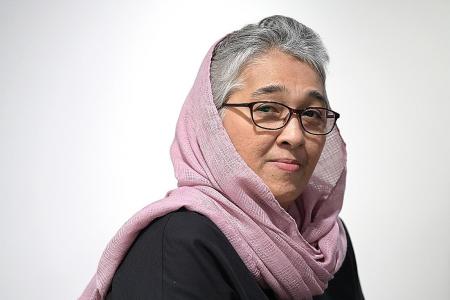Trial of new drug gives Singaporean cancer patient a new lease of life
Madam Nasreen Ismail's multiple myeloma is in complete remission
Madam Nasreen Ismail, 52, should have been battling for her life or, perhaps, even have died by now.
Instead, she is able to go shopping with her five grandchildren, aged between two and nine.
For that, she has a clinical trial and a new drug to thank.
Madam Nasreen was diagnosed with multiple myeloma just 10 days before her 50th birthday in March 2016.
She had the "high-risk" variety, which hits one in three myeloma patients and leaves them with a poor chance of survival, even with treatment.
People with high-risk myeloma generally survive for two to three years. For those with standard myeloma, half would live beyond five years.
Madam Nasreen, a housewife, has not only crossed the three-year mark, but less than one in a million of her bone marrow cells is now cancerous. In other words, her cancer is in complete remission and her risk of getting a relapse is low.
In people with multiple myeloma, it is not unusual for half the bone marrow cells to be cancerous.
Dr Chandramouli Nagarajan, a haematologist at Singapore General Hospital (SGH), said no one knows what causes the cancer, which is incurable.
Every month, more than 10 people here are diagnosed with this cancer of the bone marrow. Most are in their 60s, though it can hit people in their 40s.
Madam Nasreen's recovery was aided by two factors.
First, she was one of 30 high-risk multiple myeloma patients who were enrolled in a clinical trial here to test the effectiveness of a drug that is used only when a patient has been treated and relapses.
Multiple myeloma patients are treated with a cocktail of drugs, including chemotherapy. In the trial, one of the drugs is replaced with the new one now being tested to see if this yields better results.
Singapore was one of the first countries to go on this trial. Its early success has spurred more such trials in the world.
Second, Madam Nasreen was also relatively fit, which meant she was among the one-third of patients considered suitable for a transplant, which offers the best results, regardless of whether the patient has the standard or high-risk myeloma.
After the treatment to reduce the cancer, some of the cleaner cells are extracted from the bone marrow.
Those that remain are killed off as the body is bombarded with even stronger drugs. The cleaner cells that were harvested earlier are now put back.
The treatment was very painful, said Madam Nasreen. But it has given her more than a fighting chance.
She recalled that her troubles began with backaches and numb fingers. It was the cancer announcing itself.
Within months, the pain was so bad that she could not get out of bed and had to be carried to the toilet.
Once treatment started, her condition began to improve, although the pain was still there, and she lost her hair and appetite.
It was after the transplant that things got better. She can now do housework, go out with her grandchildren and eat, even though she has not fully regained her appetite.
Madam Nasreen is Singaporean but her husband, a taxi driver, and five children are Malaysians.
Until MediShield Life, she did not have any medical insurance. Although much of her treatment is free under the trial and she gets help from Medifund, there are still other costs.
But she is not complaining. She is grateful she has been given a new lease of life.
Get The New Paper on your phone with the free TNP app. Download from the Apple App Store or Google Play Store now



